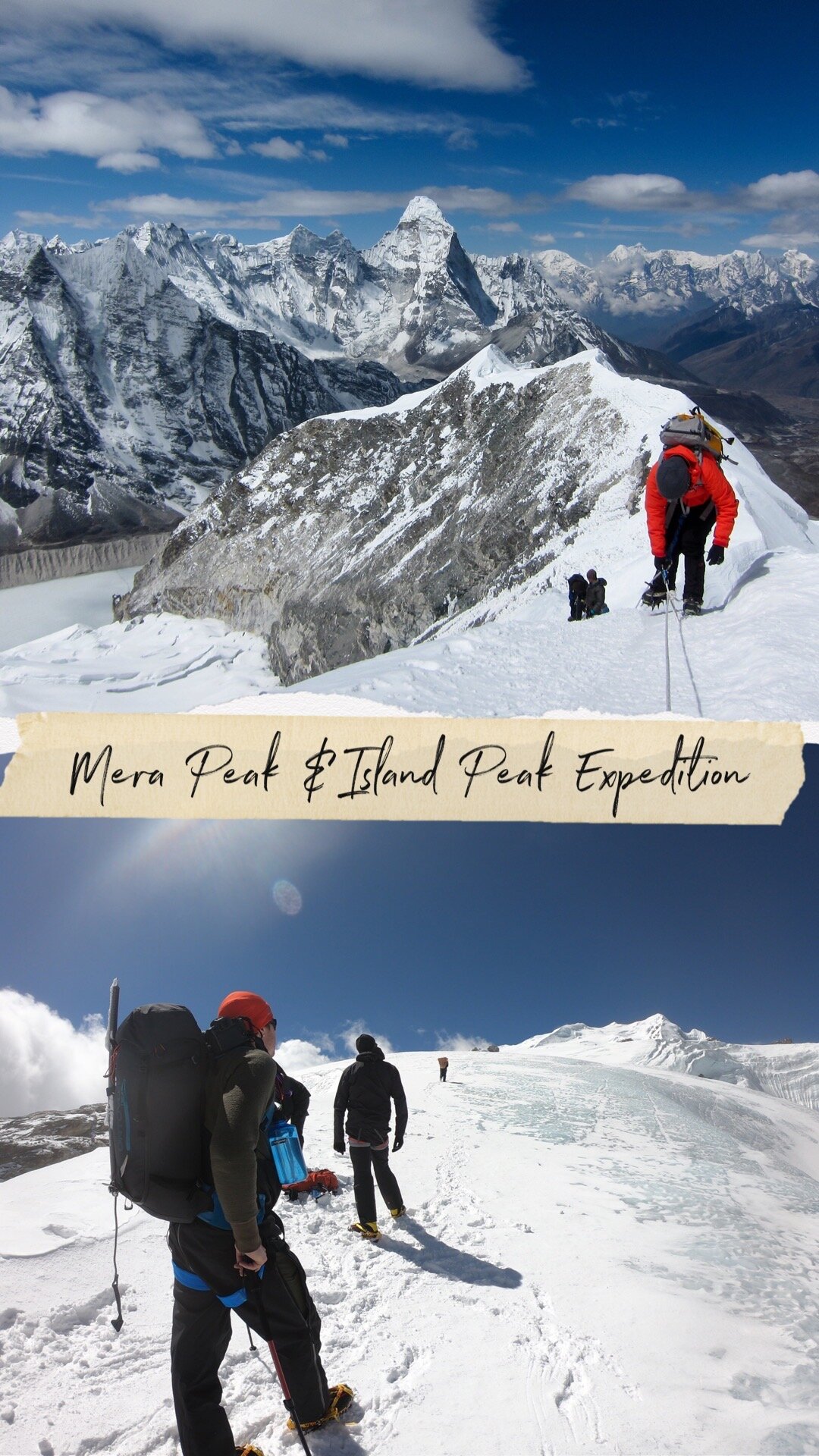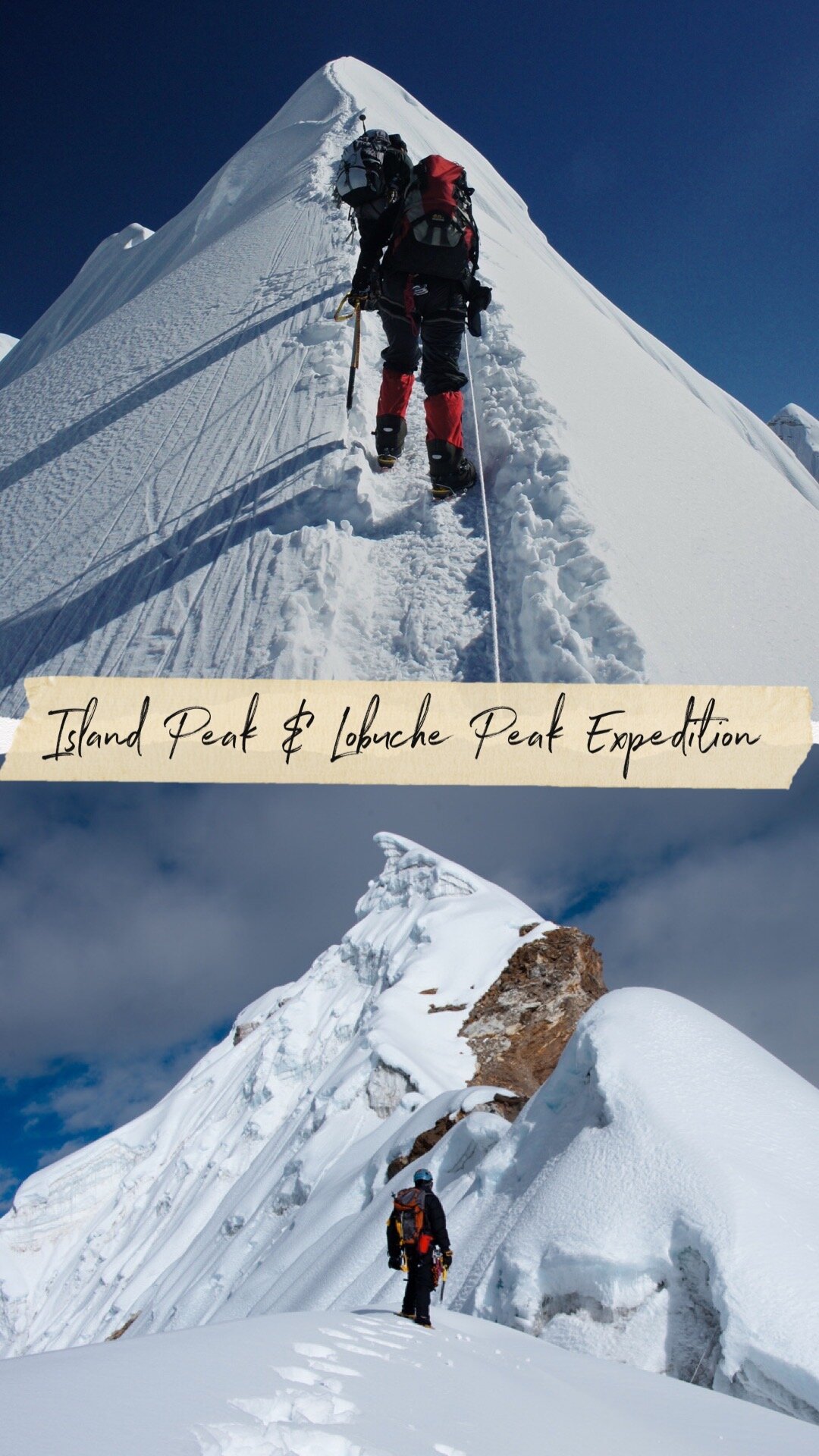5 Things to know about Mera Peak climb - Namas Adventure
Descending down Mera Peak Summit
5 things to know about Mera Peak climbing
When is the best time to trek/climb Mera Peak?
March-May ( Spring ) and September - November (Autumn) is the best time to trek/climb Mera Peak.
Is Mera Peak suitable for beginner climbers and what kind of fitness do I need?
Yes, Mera Peak is a non-technical high-altitude trekking peak. To reach summit 6476M you do not need any special climbing skills with ropes, gears, and use of an ice axe. Mera Peak is a very popular destination for clients with little or no mountaineering experience. The mountain has fewer to non-technical challenges, there are 3-4 small opening crevasses during the climb but apart from that, the climb is straightforward. All climbers are recommended to partake in preparative fitness and altitude training before attempting an ascent. You should be able to carry 5-8 kgs of your bag pack, walk up and downhill every day for 15/16 days and be able to push yourself during the summit climb.
Physically for beginners, Mera Peak can be demanding. We highly suggest you train yourself well over 6 - 4 months before your trip. You will need good endurance and body strength. Aerobic exercises mixing with overall body strength-building routines should help you prepare physically for your trip.
Can I see Mt. Everest from Mera Peak?
From the summit, five 8,000m peaks are visible: Mount Everest, Lhotse, Cho Oyu, Makalu, and Kangchenjunga, as well as many other Himalayan peaks. The standard route from the north involves high-altitude glacier walking. The west and south faces of the peak offer more difficult technical routes.
How hard is it to climb to the summit of Mera Peak?
Mera Peak is classed as 1B alpine grade. When it comes to an expedition the more fitter and stronger you are, the better your chances of successfully climbing to the summit and most of all enjoying the expedition. Summiting Mera Peak mostly depends on the weather condition and your fitness level. The climb normally starts around 3/4 am in the morning and it is about 3-4 hours climb to the summit. For any climbers it is a technically straightforward ascent, the main hurdle being proper acclimatization to the high altitude.
Which Mountain can I aim for after Mera Peak that’s above 6500M?
If you have got time and you are feeling extra adventurous then you can either Mix Mera Peak with Island Peak, which takes you through a beautiful and challenging Amphu Lapsta pass. On the way, you will also come across Baruntse 7129M and Makalu 8481M. Or you can simply take on our challenge of three 6000M+ Peak expeditions. (Mera, Island and Lobuche East) Peaks (Click for expedition Link)
Our main suggestion is to take it one step at a time. The lure of Everest is there but taking small steps, gaining the right experience, and understanding your physiology is very crucial for climbing higher mountains. Amadablam 6810M, Baruntse Peak 7129M, Manaslu 8163M, Tilicho Peak 7134M are some of the 7000M+ - 8000M+ Peak expedition we operate and organize at Namas adventure.
If you do have any more questions, please ask us below in the comment section or you can email us at bookings@namasadventure.com and our team will get back to you as soon as they can.
Stay well. Challenge yourself. Dare great things and live your story.



